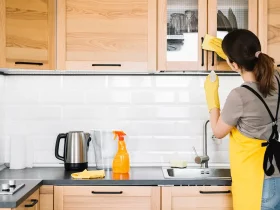Most homes in the US would fail an audit regarding sanitation. Most of your daily actions may promote bacteria growth resulting in food-borne illnesses. Below is a list of the essential kitchen best practices to follow.
Clean or Swap Your Cutting Board
People using a cutting board for poultry, meat, or raw fish should wash it thoroughly or purchase a new one from GoodCook to cut other food items. Raw meat juices are ideal for bacteria and may transfer to other foods that are in contact.
The Food and Drug Administration (FDA) advises kitchen users to wash the cutting board using hot water and soap, then soak it using a mild chlorine bleach solution. This destroys the remaining harmful bacteria.
Clean Your Counters
Brushing crumbs off your counter isn’t sufficient compared to washing the space. Spilled wine, juice from meat, and raw egg whites collect bacteria over time.
Swiping the counter won’t eliminate the food particles present. Choose an antibacterial soap or a disinfecting wipe when cleaning your countertops after snack preparation and every meal.
Wash Your Dishes Instantly
Leaving used dishes to soak seems like an excellent idea. The approach may help lift the remaining food off the plates, but the practice promotes bacterial growth in the long run. The particles in the food present an imminent danger if they stay for an extended duration. The moisture present in the water promotes the speedy growth of the bacteria. Wash the dishes immediately using hot water and soap and let them dry. Towel drying is acceptable, but the most sanitary option is air drying.
Refrigerate Leftovers
Place the leftovers in the refrigerator within two hours of cooking. Most bacteria thrive in temperature ranging between 40 and 35 degrees Fahrenheit and grows after the two-hour limit. Try placing your food in the refrigerator with a setting of below 40 degrees Fahrenheit sooner than later.
Recommended kitchen hygiene and food safety are closely related. Follow the above-listed kitchen best practices to minimize the possibility of bacteria growth. Follow the correct food hygiene rules, clean your countertops, and change your bins routinely to protect your family from illnesses and food poisoning.










Hello!! My name is Annabella
I love to eat, travel, and eat some more! I am married to the man of my dreams and have a beautiful little girl whose smiles can brighten anyone’s day!